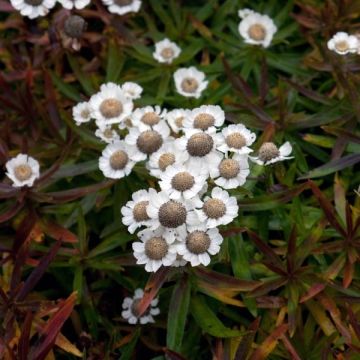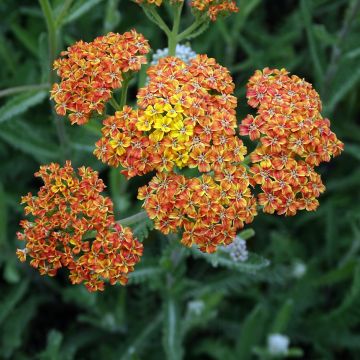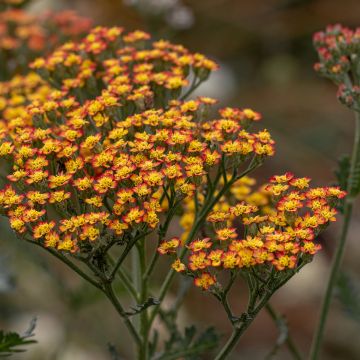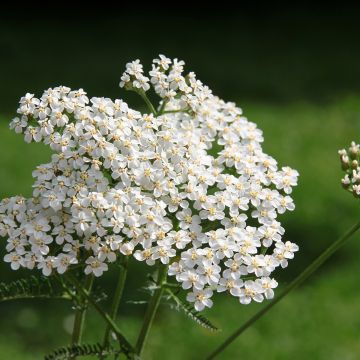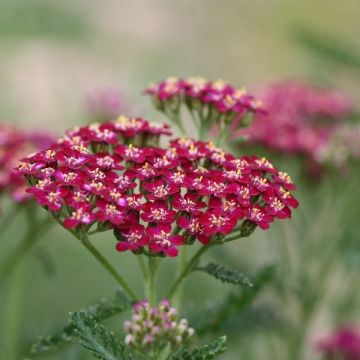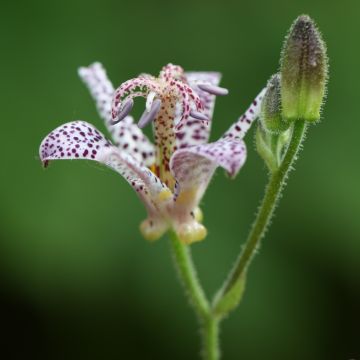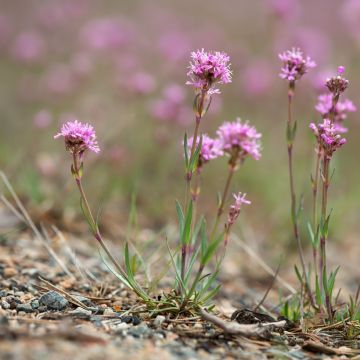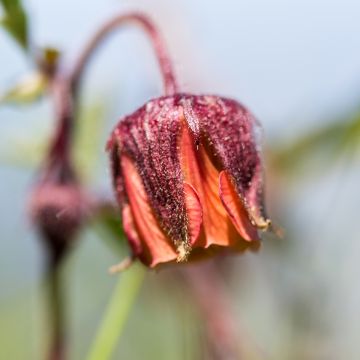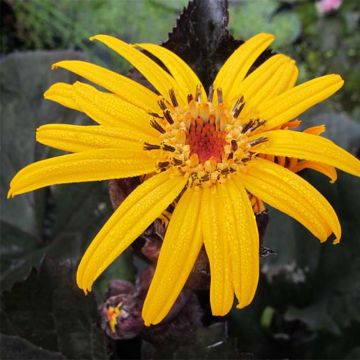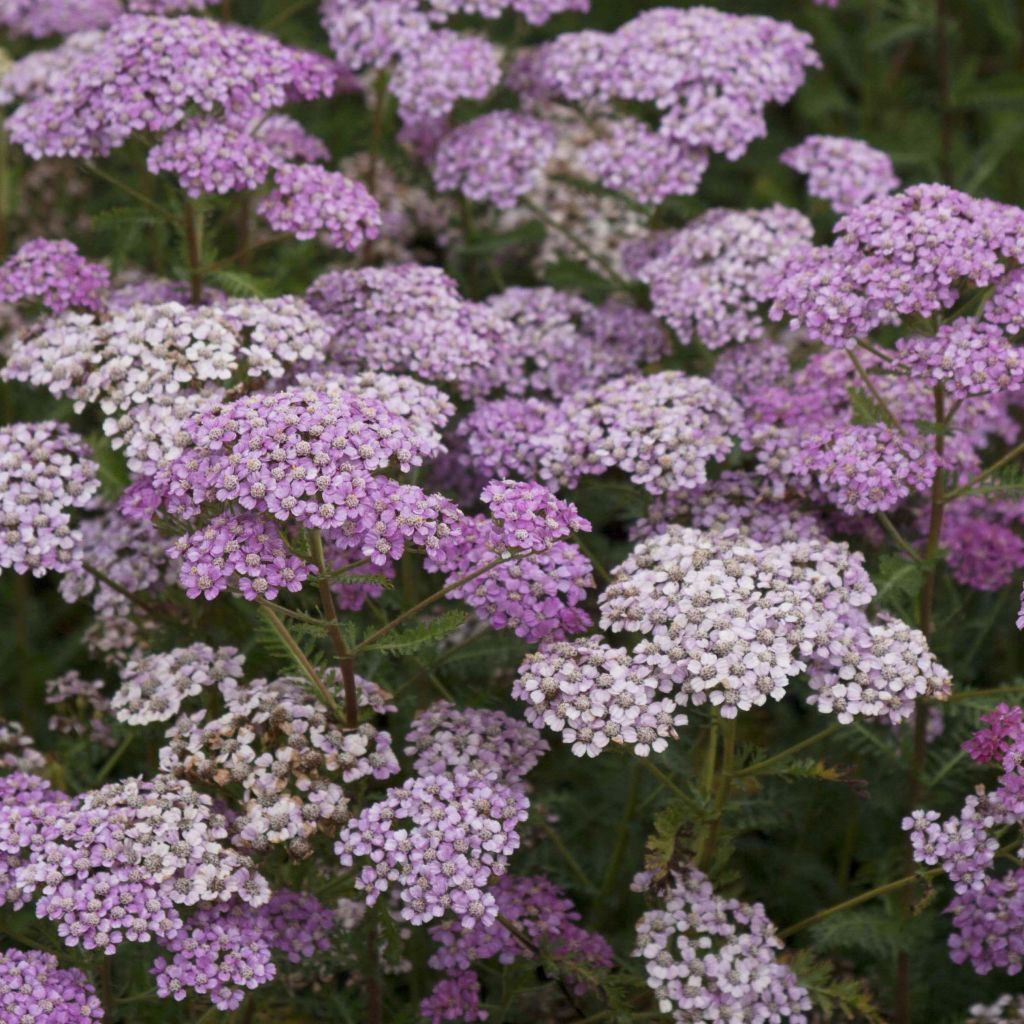

Achillea millefolium Excel
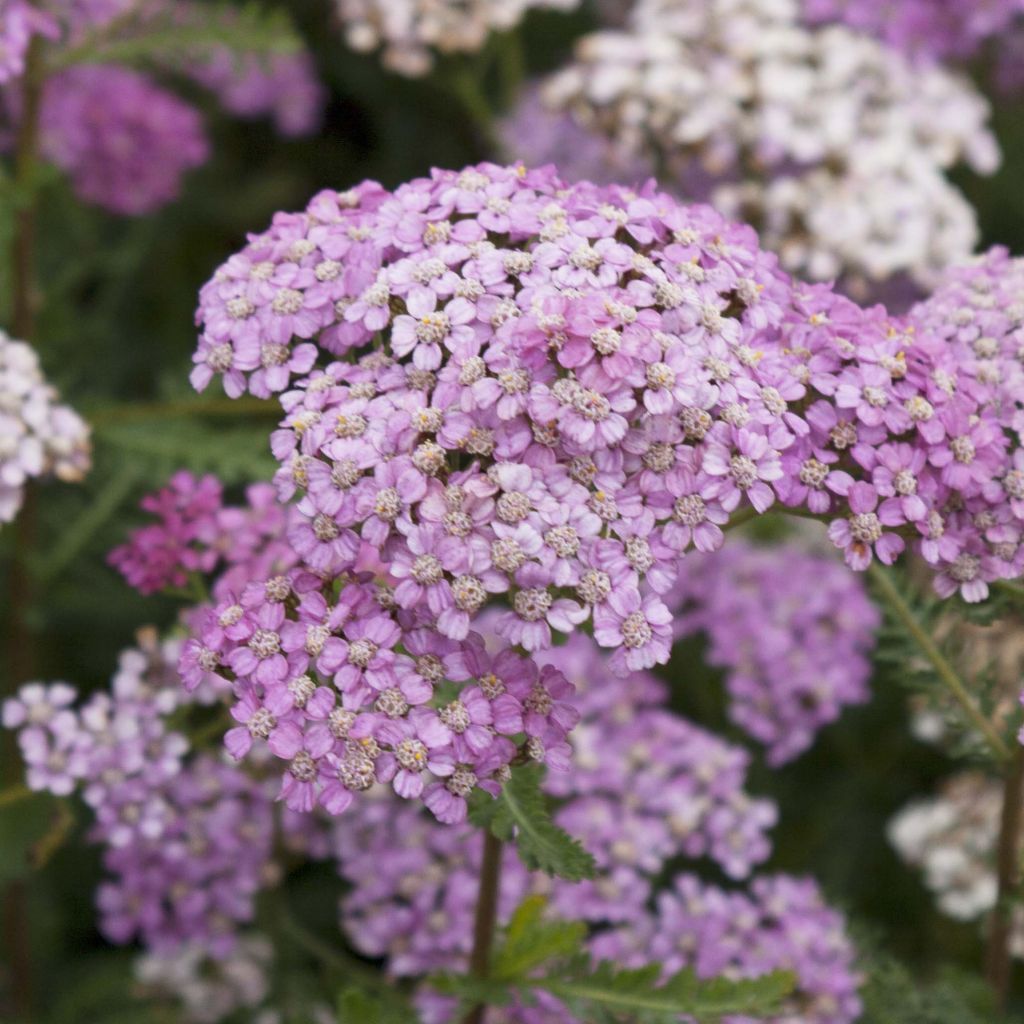

Achillea millefolium Excel
Achillea millefolium Excel
Achillea millefolium Excel
Common Yarrow, Milfoil, Thousand-leaf, Nosebleed plant
I was a bit worried about the recovery, but I was pleasantly surprised when the lovely flowers bloomed. They were of great delicacy and filled with charm, brightening up my English garden. For the second year, the cluster of flowers has doubled and is even more beautiful. Pure bliss!
Florence, 01/08/2021
This item cannot be shipped to the selected country
Delivery charge from €5.90
More information
Schedule delivery date,
and select date in basket
This plant carries a 12 months recovery warranty
More information
We guarantee the quality of our plants for a full growing cycle, and will replace at our expense any plant that fails to recover under normal climatic and planting conditions.
From €5.90 for pickup delivery and €6.90 for home delivery
Express home delivery from €8.90.

Does this plant fit my garden?
Set up your Plantfit profile →
Description
The Achillea millefolium 'Excel', also known as Yarrow, is a truly attractive variety with its large umbels of bright pink to violet-pink flowers that fade to a soft pink over time. The overall effect is a bouquet in shades of pink, complemented by a vibrant green foliage, finely cut and fragrant even when dry. From June to September, this highly floriferous perennial accompanies summer blooms and blends in with the blue stars of asters. Exuberant and undemanding, this plant thrives in poor soil and adds a charming touch to borders and informal flowerbeds. Easy to grow.
The 'Excel' Yarrow is an evergreen perennial plant that spreads through stolons and has an upright clumping habit. It belongs to the aster family. It is an excellent cultivar, reaching a height of 60 cm (24in) when in flower, with foliage measuring 20 to 25 cm (8 to 10in). It spreads over 50 cm (20in) or more.
The remarkably long flowering period lasts from June to September. The pink hue, ranging from light to deep, of the inflorescences varies depending on the ripeness of the flowers. These flower heads, which appear at the top of the stems, form flat or slightly domed corymbs, measuring approximately 7 cm (3in) in diameter. The stem is channelled and villous. The leaves are deciduous or semi-evergreen, highly aromatic even when dry, and finely divided into strips. The leaves are feathery and a vibrant green colour.
The 'Excel' Yarrow will fit well in a rock garden, on top of a wall, as a border plant, or on a slope where it will help prevent erosion. This stoloniferous plant can also be used as ground cover over large areas. It can withstand competition from tree roots, making it a good ground cover choice for woodland edges. As it is easy to grow and tolerates drought well, it is perfect for underplanting shrub roses or bordering a sunny flowerbed. Its flowers, which can be picked before fully opening, are ideal for creating bouquets.
Report an error about the product description
Achillea millefolium Excel in pictures
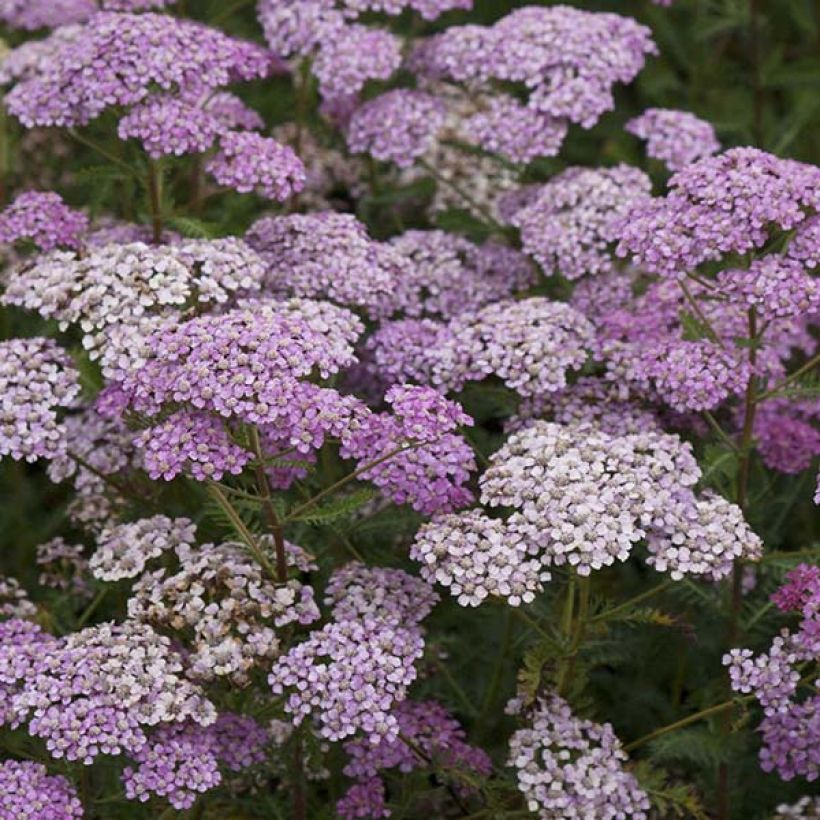

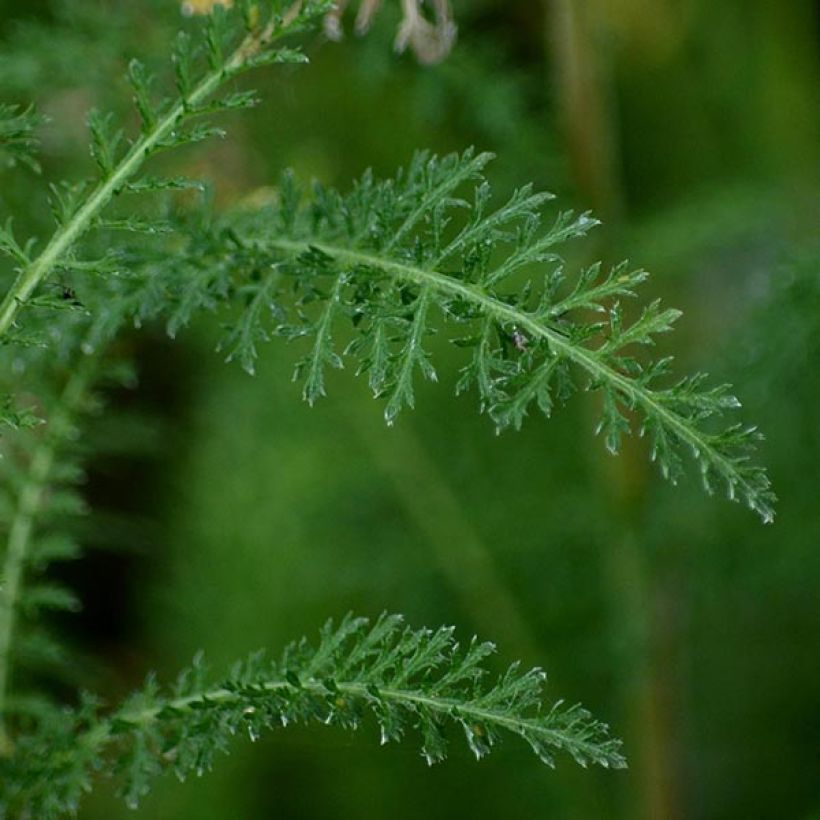

Flowering
Foliage
Plant habit
Botanical data
Achillea
millefolium
Excel
Asteraceae
Common Yarrow, Milfoil, Thousand-leaf, Nosebleed plant
Cultivar or hybrid
Other Achillea
Planting and care
The Achillea millefolium 'Excel' is planted all year round in buckets, about 5 feet apart, in well-worked and well-drained soil. It will grow in any type of soil, even limestone, dry or moist but well-drained. It even adapts to clay soils, if they are healthy and well amended. It will grow in partial shade but prefers full sun. Remove faded flowers and cut back all vegetation at the end of the season to promote the growth of young shoots in spring. Divide the clump in spring.
Planting period
Intended location
Care
-
, onOrder confirmed
Reply from on Promesse de fleurs
Summer flowering perennials
Haven't found what you were looking for?
Hardiness is the lowest winter temperature a plant can endure without suffering serious damage or even dying. However, hardiness is affected by location (a sheltered area, such as a patio), protection (winter cover) and soil type (hardiness is improved by well-drained soil).

Photo Sharing Terms & Conditions
In order to encourage gardeners to interact and share their experiences, Promesse de fleurs offers various media enabling content to be uploaded onto its Site - in particular via the ‘Photo sharing’ module.
The User agrees to refrain from:
- Posting any content that is illegal, prejudicial, insulting, racist, inciteful to hatred, revisionist, contrary to public decency, that infringes on privacy or on the privacy rights of third parties, in particular the publicity rights of persons and goods, intellectual property rights, or the right to privacy.
- Submitting content on behalf of a third party;
- Impersonate the identity of a third party and/or publish any personal information about a third party;
In general, the User undertakes to refrain from any unethical behaviour.
All Content (in particular text, comments, files, images, photos, videos, creative works, etc.), which may be subject to property or intellectual property rights, image or other private rights, shall remain the property of the User, subject to the limited rights granted by the terms of the licence granted by Promesse de fleurs as stated below. Users are at liberty to publish or not to publish such Content on the Site, notably via the ‘Photo Sharing’ facility, and accept that this Content shall be made public and freely accessible, notably on the Internet.
Users further acknowledge, undertake to have ,and guarantee that they hold all necessary rights and permissions to publish such material on the Site, in particular with regard to the legislation in force pertaining to any privacy, property, intellectual property, image, or contractual rights, or rights of any other nature. By publishing such Content on the Site, Users acknowledge accepting full liability as publishers of the Content within the meaning of the law, and grant Promesse de fleurs, free of charge, an inclusive, worldwide licence for the said Content for the entire duration of its publication, including all reproduction, representation, up/downloading, displaying, performing, transmission, and storage rights.
Users also grant permission for their name to be linked to the Content and accept that this link may not always be made available.
By engaging in posting material, Users consent to their Content becoming automatically accessible on the Internet, in particular on other sites and/or blogs and/or web pages of the Promesse de fleurs site, including in particular social pages and the Promesse de fleurs catalogue.
Users may secure the removal of entrusted content free of charge by issuing a simple request via our contact form.
The flowering period indicated on our website applies to countries and regions located in USDA zone 8 (France, the United Kingdom, Ireland, the Netherlands, etc.)
It will vary according to where you live:
- In zones 9 to 10 (Italy, Spain, Greece, etc.), flowering will occur about 2 to 4 weeks earlier.
- In zones 6 to 7 (Germany, Poland, Slovenia, and lower mountainous regions), flowering will be delayed by 2 to 3 weeks.
- In zone 5 (Central Europe, Scandinavia), blooming will be delayed by 3 to 5 weeks.
In temperate climates, pruning of spring-flowering shrubs (forsythia, spireas, etc.) should be done just after flowering.
Pruning of summer-flowering shrubs (Indian Lilac, Perovskia, etc.) can be done in winter or spring.
In cold regions as well as with frost-sensitive plants, avoid pruning too early when severe frosts may still occur.
The planting period indicated on our website applies to countries and regions located in USDA zone 8 (France, United Kingdom, Ireland, Netherlands).
It will vary according to where you live:
- In Mediterranean zones (Marseille, Madrid, Milan, etc.), autumn and winter are the best planting periods.
- In continental zones (Strasbourg, Munich, Vienna, etc.), delay planting by 2 to 3 weeks in spring and bring it forward by 2 to 4 weeks in autumn.
- In mountainous regions (the Alps, Pyrenees, Carpathians, etc.), it is best to plant in late spring (May-June) or late summer (August-September).
The harvesting period indicated on our website applies to countries and regions in USDA zone 8 (France, England, Ireland, the Netherlands).
In colder areas (Scandinavia, Poland, Austria...) fruit and vegetable harvests are likely to be delayed by 3-4 weeks.
In warmer areas (Italy, Spain, Greece, etc.), harvesting will probably take place earlier, depending on weather conditions.
The sowing periods indicated on our website apply to countries and regions within USDA Zone 8 (France, UK, Ireland, Netherlands).
In colder areas (Scandinavia, Poland, Austria...), delay any outdoor sowing by 3-4 weeks, or sow under glass.
In warmer climes (Italy, Spain, Greece, etc.), bring outdoor sowing forward by a few weeks.



































